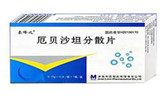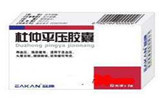On December 30, 2015, the General Office of the National Health and Family Planning Commission issued the "Health Literacy of Chinese Citizens - Basic Knowledge and Skills (2015 Edition)" (hereinafter referred to as "Health Literacy 66" (2015 Edition)), which proposed the basic health knowledge and concepts, healthy lifestyles and behaviors, and basic health skills that urban and rural residents should have at this stage, It is an important basis for health education and health communication to the public by health and family planning departments at all levels, medical and health professional institutions, social institutions, mass media, etc.
In 2008, the former Ministry of Health for the first time released Health Literacy of Chinese Citizens - Basic Knowledge and Skills (Trial). Compared with 2008, Health Literacy 66 (2015) focuses on health problems highlighted in recent years, such as mental health problems, slow STD Prevention and treatment problems, safety and first aid problems, scientific medical treatment and rational drug use problems, etc. In addition, knowledge about caring for women's reproductive health, access to, screening and utilization of health information, etc. was also increased.
The revision was completed by the China Health Education Center under the leadership of the National Health and Family Planning Commission. According to the principle of "keeping the overall framework unchanged, updating and improving, and finding and filling gaps", nearly 100 experts were organized successively, which lasted more than one year. After expert argumentation, strict evidence-based, extensive consultation and other work links, the revision work was finally completed.
Article 66 of Health Literacy (2015 Edition) defines the basic content of Chinese citizens' health literacy from three aspects: basic knowledge and concepts, healthy lifestyle and behavior, and basic health skills, which is an important basis for evaluating the level of Chinese citizens' health literacy.
After the release of Article 66 of Health Literacy (2015 version), the National Health and Family Planning Commission will further introduce the definition of Article 66 of Health Literacy (2015 version) for public dissemination by health and family planning departments at all levels, medical and health professional institutions, social institutions, mass media, etc. Health and family planning professional institutions at all levels will also take this as a basis for the development and production of relevant popular science books, videos, and health education books, make full use of existing communication technologies and resources, and disseminate accessible, scientific and practical health knowledge and skills to the public through various ways to effectively improve the level of public health literacy.
Chinese Citizens' Health Literacy - Basic Knowledge and Skills (2015 Edition)
Basic knowledge and concept
1。 Health is not just the absence of disease or weakness, but the sound state of physical, psychological and social adaptation.
2。 Everyone has the responsibility to maintain their own and others' health, and a healthy lifestyle can maintain and promote their own health.
3。 Environment is closely related to health. Protect the environment and promote health.
4。 Donate blood for free, help others and benefit yourself.
5。 Everyone should love, help and not discriminate against the sick and disabled.
6。 Regular physical examination.
7。 The normal blood pressure of adults is systolic blood pressure ≥ 90mmHg and < 140mmHg, and diastolic blood pressure ≥ 60mmHg and < 90mmHg; Underarm temperature 36 ℃~37 ℃; Calm breathing 16-20 times/minute; The heart rate is 60~100 times/minute.
8。 Vaccination is the most effective and economical measure to prevent some infectious diseases. Children should be vaccinated according to the immunization procedure after birth.
9。 stay influenza Influenza vaccination before the epidemic season can reduce the chance of influenza or alleviate the symptoms after influenza.
10。 AIDS 、 hepatitis B Hepatitis C and hepatitis C are transmitted through blood, sexual contact and mother infant three ways, and daily life and work contact will not spread.
11。 pulmonary tuberculosis It is mainly transmitted through droplets generated by patients' coughing, sneezing, loud speaking, etc; In case of cough, expectoration for more than 2 weeks, or blood in sputum, it is necessary to timely check whether you have pulmonary tuberculosis.
12。 Adhere to standard treatment, most of the patients with pulmonary tuberculosis can be cured, and can effectively prevent the emergence of drug-resistant tuberculosis.
13。 stay schistosomiasis In epidemic areas, contact with epidemic water shall be avoided as far as possible; After being exposed to epidemic water, they shall be checked or receive preventive treatment in a timely manner.
14。 Domestic dogs and cats should be vaccinated for veterinary use rabies Vaccine; After a person is scratched or bitten by a dog or cat, the wound should be washed immediately, and anti rabies immunoglobulin (or serum) and rabies vaccine for human use should be injected as soon as possible.
15。 Mosquitoes, flies, mice, cockroaches, etc. can spread diseases.
16。 The dead and sick livestock shall be reported, and the dead and sick livestock and wild animals shall not be processed or eaten.
17。 Pay attention to blood pressure changes and control hypertension Risk factors: hypertension patients should learn self-health management.
18。 Pay attention to blood sugar changes and control diabetes Risk factors, diabetic patients should strengthen self health management.
19。 take an active part in cancer Screening, early detection of cancer and precancerous lesions.
20。 Everyone may have depression and anxiety depression and Anxiety disorder 。
21。 Care for the elderly, prevent the elderly from falling, and identify the elderly dementia 。
22。 Choose safe and efficient contraceptive measures to reduce labor abortion Care for women's reproductive health.
23。 Health food is not medicine, so choose health food correctly.
24。 Labourers should understand the hazards existing in their posts and working environment, comply with operating procedures, pay attention to personal protection, and avoid occupational injuries.
25。 Workers engaged in toxic and harmful work shall enjoy the right to occupational protection.
Healthy lifestyle and behavior
26。 Healthy lifestyle mainly includes reasonable diet, moderate exercise, smoking cessation and alcohol restriction, and psychological balance.
27。 Keep normal weight and avoid overweight and obesity.
28。 The diet should be dominated by cereals, and more vegetables, fruits and potatoes should be eaten. Attention should be paid to meat and vegetables, as well as the fine and coarse collocation.
29。 It is recommended to eat milk, beans and their products every day.
30。 The diet should be light, less oil, salt and sugar, and qualified iodized salt should be used.
31。 Pay attention to the hygiene of drinking water, and drink an appropriate amount of water every day.
32。 Raw and cooked food shall be stored and processed separately, raw vegetables and fruits shall be washed, and spoiled and expired food shall not be eaten.
33。 Adults should carry out 6~10 thousand step equivalent physical activities every day. Exercise is beneficial, and the key is persistence.
34。 Smoking and second-hand smoke exposure can lead to cancer, cardiovascular diseases, respiratory diseases and other diseases.
35。 "Low tar cigarettes" and "Chinese herbal medicine cigarettes" cannot reduce the harm of smoking.
36。 Smoking cessation at any age can benefit. The earlier you quit, the better. The smoking cessation clinic can provide professional smoking cessation services.
37。 Drink less and not too much.
38。 Use addictive drugs such as sedative hypnotics and analgesics according to the doctor's advice to prevent drug dependence.
39。 Reject drugs.
40。 Combine work and rest, and ensure 7-8 hours of sleep every day.
41。 Pay attention to and maintain mental health, and take the initiative to seek help when encountering psychological problems.
42。 Wash hands frequently, bathe frequently, brush teeth in the morning and evening, rinse mouth after meals, and do not share towels and toiletries.
43。 According to the weather change and air quality, open windows for ventilation in time to maintain indoor air circulation.
44。 Do not smoke, spit, cover your mouth and nose when coughing or sneezing in public places.
45。 Use sanitary toilets in rural areas and manage human and livestock excrement.
46。 Get medical treatment scientifically, timely, treat according to the doctor's advice, and treat the diagnosis and treatment results rationally.
47。 Rational drug use, can take orally without intramuscular injection, can intramuscular injection without infusion, and can use antibiotics under the guidance of doctors.
48。 Wear helmets and safety belts, do not exceed the speed limit, do not drink and do not drive fatigue, and reduce road traffic injuries.
49。 Strengthen care and education to prevent children from approaching dangerous waters and drowning.
50。 Keep warm and ventilated in winter Gas poisoning 。
51。 Take the initiative to receive premarital and pre pregnancy health care. During pregnancy, they should receive at least five antenatal examinations and be hospitalized for delivery.
52。 Breastfeeding should be started as soon as possible after the baby is born, and complementary food should be added reasonably when the baby is 6 months old.
53。 Through parent-child communication and play, children's early development can be promoted, and psychological and behavioral development problems should be intervened as soon as possible.
54。 Teenagers are in a critical period of physical and mental development. They should develop healthy behavior and lifestyle to prevent myopia , overweight and obesity, to avoid Internet addiction and premature sexual behavior.
basic skill
55。 Pay attention to health information, and be able to obtain, understand, discriminate and apply health information.
56。 Be able to understand the labels and instructions of food, drugs and health products.
57。 Be able to identify common danger signs, such as high pressure, flammable, explosive, highly toxic, radioactive, biosafety, etc., and stay away from dangerous substances.
58。 Can measure pulse and axillary temperature.
59。 Be able to use condoms correctly, reduce the risk of HIV infection and sexually transmitted diseases, and prevent accidental pregnancy.
60。 Properly store and correctly use pesticides and other toxic substances to prevent children from contacting them.
61。 Call 120 for emergency medical assistance and 12320 for health consultation services.
62。 When there is a large amount of trauma bleeding, stop bleeding and bandage immediately; Doubt fracture The wounded should not be moved easily.
63。 Cardiopulmonary resuscitation will be carried out for patients with sudden respiratory and cardiac arrest.
64。 rescue get an electric shock In case of electric shock, first cut off the power supply, and do not directly contact the person who gets an electric shock.
65。 In case of fire, cover your mouth and nose with a wet towel and escape in a low position; Call 119 for fire alarm.
66。 In case of an earthquake, choose the correct shock absorption mode, and carry out self rescue and mutual rescue immediately after the earthquake.




